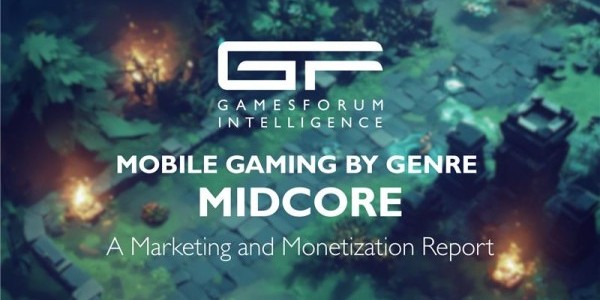Emma Raz gives the lowdown on contextual advertising

In this week's Gamesforum Faces behind the Fun, we speak with NumberEight, Director of Commercial, Emma Raz, on her role and to get the lowdown on contextual advertising.
Hi Emma Raz , tell us a bit about yourself
I always find this to be one of the most challenging questions to answer, which is pretty funny and a tad ironic. I should start by saying that I am a curious person by nature; as a small child, I conducted mini-research projects on things I saw on TV and wanted to understand better. Why is that relevant? This curiosity was always at the forefront of my career and the choices I have made.
I started my career in Cyber Security, working on hardware and thus ad hoc learning everything I could about manufacturing and electronics. Next, I moved to the AdTech industry, where I learned about advertising and ad monetisation, specialising in mobile gaming.
My curiosity and love for games lead me to explore further how I can help improve gaming economies and enable mobile games to become more profitable. A passion I continue to pursue to this day.
You joined NumberEight back on February 21; how’s it been joining a new company remotely?
Let’s just say that this isn’t my first rodeo. I had started working remotely way before COVID-19 came into the picture. However, this was an extreme experience, as I usually at least got to visit and meet my teammates within the first few months. During this time, I was unable to visit in person for the first 5-6 months. Moreover, as I am currently building my team, I have to make sure we all create the same level of teamwork and trust as in a team that worked in person before working remotely. It hasn’t been easy, but I am always up for a challenge.
Straight to the point, what is contextual advertising?
That is a great question! Context seems to be on everyone’s mind recently, or at least everyone in the advertising industry. There are many ways to define contextual advertising. First, however, let’s look at the official dictionary definition of context. This definition states that context is the circumstances that form the setting for an event, statement, or idea, and in terms of which it can be fully understood. The way I see it, the critical information is that context better allows us to understand the full circumstances and environment in which something occurs. If we apply the same definitions to contextual advertising, we can say that context would be everything that surrounds the ad and the user consuming it; whether virtual or physical.
While on the web, context is often synonymous with content. However, in mobile, the same logic usually doesn’t apply. That’s why at NumberEight, we see mobile-context, or Mobex, as the situation and environment in which the user views the ad. For example, let’s say I play a game on my phone while commuting on the tube, later I play again while waiting in line in the store, and then once again while relaxing at home on my sofa. My needs and interests are entirely different in all these different contexts.
While on the tube, I might be receptive to ads about news and music; at the store, I will probably be more interested in food and fitness apps, and later at night, I am more likely to engage with ads about other games and movies. We as people constantly change our behaviour based on circumstances - contextual advertising tries to match the best ad to whatever the user might need at that moment.
How does understanding our users’ behaviour help mobile games publishers?
That is a big question and an even bigger answer… Games publishers can better understand why users engage with certain types of content, why players churn, why others stay engaged, why players purchase certain items or currency, all by adding a layer of behavioural data.
Publishers can then use these learnings to:
- Maximise IAP revenue
- Improve user retention
- Reduce UA cost
If you know a user often purchases while commuting because they are bored and want to keep on playing, you know that is the best time to show them special offers. You also understand that they are likely to enjoy specific features more than others, and thus not all currencies will be as relevant. Another example is players' behaviour while waiting in line; at that time, the players are likely to consume only short content and have a short attention span. Finally, you can learn that your whales are also foodies or fitness enthusiasts that often play while taking breaks at work, and thus you should target them accordingly.
There are so many possibilities of what game publishers can do with context and behavioural data. It all starts with an excellent first-party data strategy, some degree of curiosity and creativity, and a willingness to test and try new things.
Is NumberEight’s tech fully compliant with changes to IDFA?
I often say that I don’t know if we were just lucky or very insightful, but we are probably one of the only companies in the industry that IDFA did not impact. That is because NumberEight’s AI solution was originally designed to utilise edge computing, making the solution compliant, even before such compliance was going to be required.
One of the core foundations of NumberEight’s ethos and the product is user privacy. We wanted a product that provides users with the best experience possible without needing their PII.
To safeguard users’ privacy, we made sure not to use any IDs, ever. We also don’t send any raw data off the device or allow anyone to use our data for fingerprinting.
So yes, to your answer. NumberEight’s tech is indeed fully compliant with Apple’s privacy changes.
How do advertisers feel about contextual?
As you probably know, context is one of the most significant buzzwords in digital advertising nowadays; as a result, many advertisers and brands are curious about how they might activate this capability in their own advertising campaigns.
However, like with every new concept or product, there is an educational and standardisation process. In fact, we have been working with IAB Tech Lab for months to help build the taxonomy for context, as currently, that is an area wholly overlooked. Without a taxonomy in place, programmatic buying is quite tricky.
For example, NumberEight received much interest from both media agencies and brands that wanted to start testing ASAP; they will need the support of DSPs in particular and the industry, in general, to do so. This gap is why we as an industry need to come together and help define the meaning of contextual advertising and formalise how advertisers might buy it. We will all benefit from doing so.
Do you think we’re set for major disruption to the games advertising scene?
I do love crystal balling, so let me try and make an educated guess. First, I do think we are likely to see a significant disruption, though it won’t happen overnight. Furthermore, we won’t see the same impact across every single gaming genre.
At the moment, we are already seeing that UA on social media is becoming too expensive, leading to a major shift in advertising funds. We also see new investments in developing 1st party data processes and management. Many games have also been refocusing their attention on brand advertising and, in particular, direct partnerships with brands.
Alternative game economy structures like IAPs are slowly gaining a more central part of the conversation. The logic is quite simple; since ad monetisation is proving to be an unstable source of income as of now, games are searching for ways to supplement and stabilise their income.
Emma Raz, thanks very much for speaking with Gamesforum today










